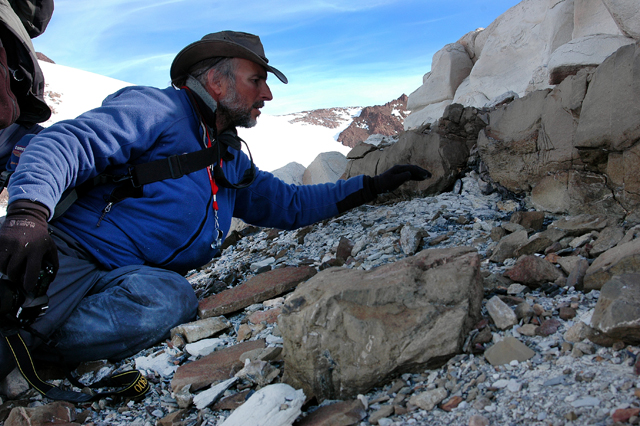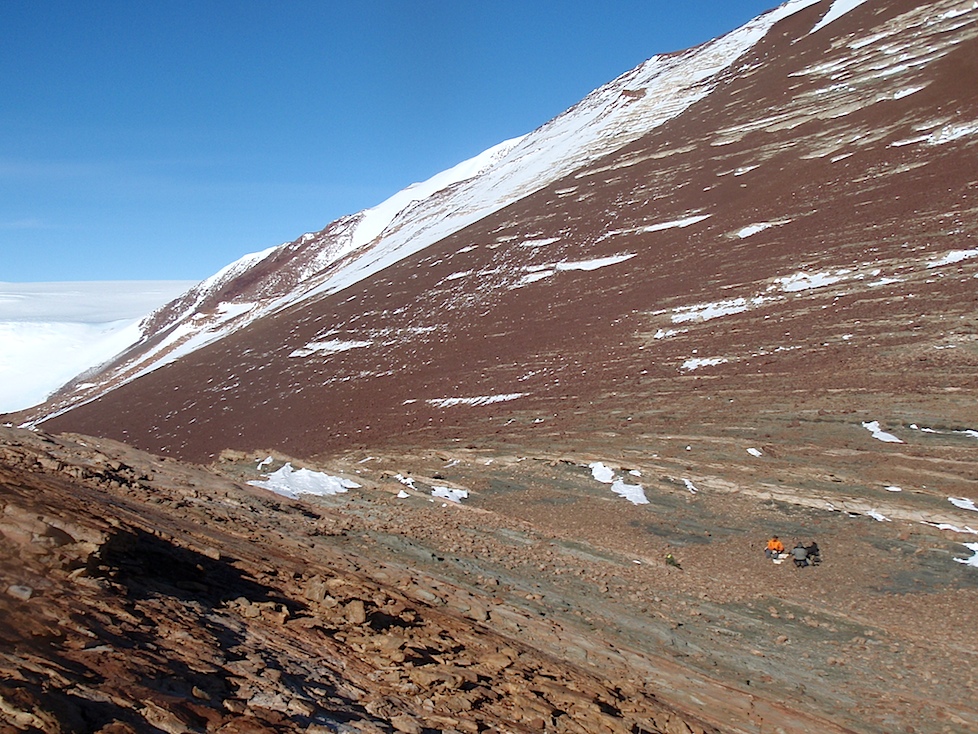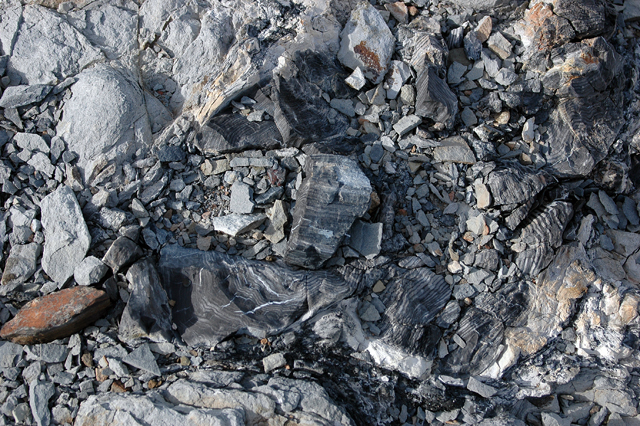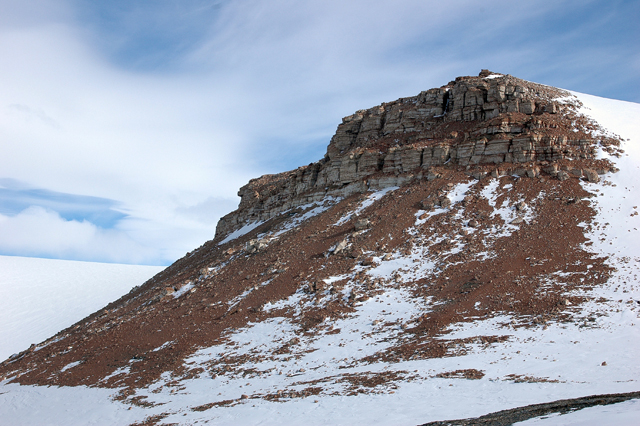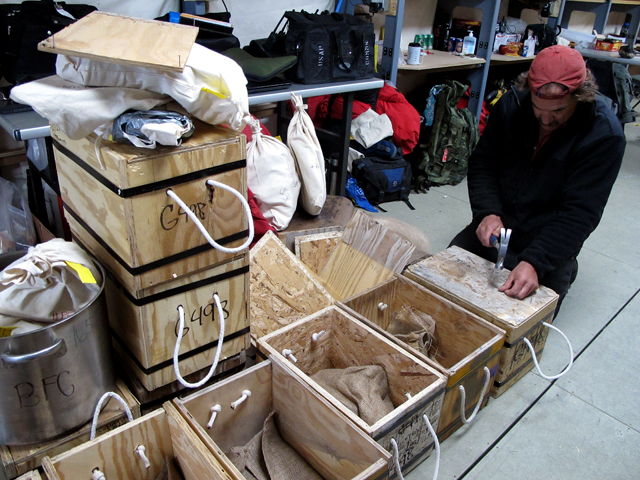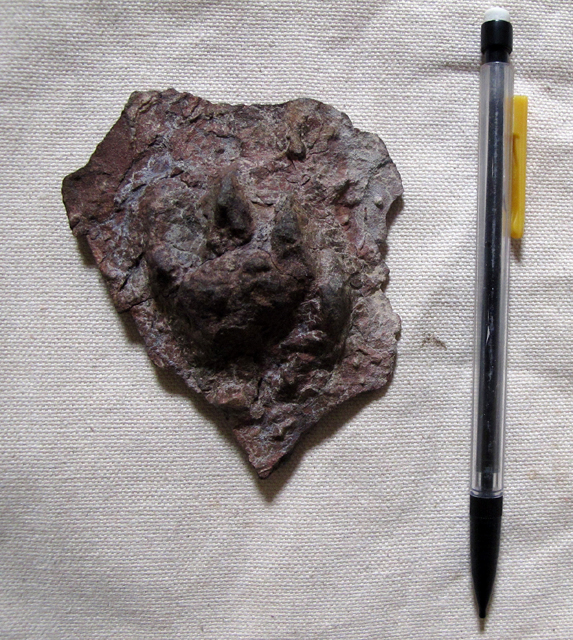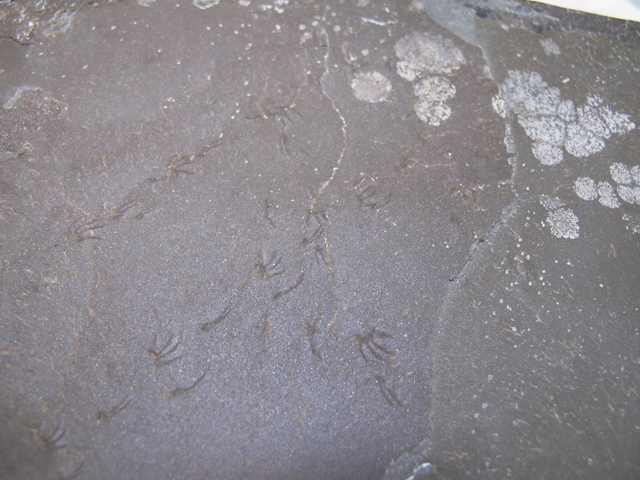Page 2/2 Posted April 8, 2011
Team finds first evidence of fresh-water horseshoe crabs in AntarcticaDirect body fossil evidence of such creatures from that period is frustratingly scarce in Antarctica, aside from the traces that Hasiotis and others have discovered. But similar burrows with bones excavated in South Africa are nearly similar, allowing scientists to speculate on the types of animals that once lived on this part of the continent. The lack of body fossils isn’t surprising, given the special environmental conditions that must exist for preservation. It’s really a matter of odds, Hasiotis notes. “You and I only have one body to give to science, but we can make millions of tracks and trails and traces in a lifetime,” he says. Hasiotis snaps dozens of digital pictures of the find, with hopes of returning in the few weeks he has left in Antarctica this season. It will require shuffling priorities, as weather has already wreaked its usual havoc on the field schedule. First, there were delays at McMurdo Station Despite such setbacks, the rewards have been many. And they keep coming, as Hasiotis, Flaig and McCullough scramble down the castle outcrop, zipping over to another area of exposed rock a minute’s ride away. Flaig had explored this site back in 2003 during his first trip to Antarctica, when a similar field camp was established in this slice of the central Transantarctic Mountains for similar geological and paleontological research now under way. It doesn’t take long for him to find the tree stumps. Yes, trees in Antarctica. The discovery itself is not new, but Hasiotis is particularly jazzed about an earlier find at a different site that unleashes his imagination of what might have transpired so long ago. The blackened rock he displayed previously back at camp can only be one thing — fossilized charred wood. “There were forest fires in Antarctica 260 million years ago,” he says. “We have evidence that there were forest fires that would rage in the summer time in Antarctica 260 million years ago.” Such trees would have stood in a swamp, though lightning strikes could have conceivably sparked the fuel sitting at the trunks of this ancient forest during droughts. Still, even the most creative imagination — and best scientific mind — struggles to put together a comprehensive picture of Antarctica in the Permian-Triassic. The most well-accepted story of the period suggests that the climate shifted from wet and warm to dry and warmer at the boundary. But those interpretations are inherently biased, based on the evidence at hand. Sedimentologists like Flaig assume the Triassic dried out based on the sand that filled the basin. But so much of the evidence is covered by ice in today’s Antarctica. We only get what [is] exposed,” Flaig says. “We only have what these mountains give us.” This season the mountains have been kind to Hasiotis, a relative newcomer to the U.S. Antarctic Program Inside a heated RAC tent at the CTAM field camp, Hasiotis takes stock of his growing pile of fossils, wrapping them in burlap bags and placing them in rock boxes for transportation back to the University of Kansas. On one flat, grayish rock slab, angled just right to catch the light, uniform prints march across the face — almost like small, four-fingered handprints from a stick figure. Hasiotis asks a visitor to guess what might have made the traces. “There were horseshoe crabs living in freshwater rivers and lakes in Antarctica 245-250 million years ago,” he enthuses. “This is very diagnostic of horseshoe crabs. That’s the pattern they make.” If correct, it would be the first such discovery of horseshoe crabs in Antarctica. Today’s horseshoe crabs live in marine environments, not fresh water. Hasiotis says the formation of the supercontinent probably played a role in the evolutionary history of the crabs, forcing them into a fresh water environment when other habitats may have disappeared. “Trace fossils are like fingerprints. They don’t tell you genus or species, but it can tell you horseshoe crab,” he says. “We’ve hit the jackpot on this trip between the tracks of animals we don’t even know about, the horseshoe crabs, and the small burrowing therapsids or reptiles.” NSF-funded research in this article: Stephen Hasiotis, University of Kansas, Award No. 0944282 Return to CTAM 2010-11 main page. |



For USAP Participants |
For The Public |
For Researchers and EducatorsContact UsU.S. National Science FoundationOffice of Polar Programs Geosciences Directorate 2415 Eisenhower Avenue, Suite W7100 Alexandria, VA 22314 Sign up for the NSF Office of Polar Programs newsletter and events. Feedback Form |

